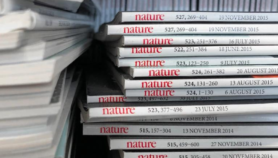Send to a friend
The details you provide on this page will not be used to send unsolicited email, and will not be sold to a 3rd party. See privacy policy.
This guide, published by Stempra — a UK-based network for press and public relations officers working in science-related fields — helps press officers communicate science effectively and responsibly, while steering clear of hype and over-selling.
When promoting research, press officers need to think carefully about the timing, objectives, audiences and tactics for each story, say the authors.
They call on press officers to help improve science journalism by writing responsible press releases, being careful when making claims or communicating risk, and including information on the limitations of a specific study. The author suggests that almost all research involving animals can be promoted — with some extra preparation.
The section on "press office essentials" provides practical advice on writing, timing, targeting and distributing press releases and explains the purpose and use of embargoes. Tips on selecting and preparing scientists — key partners in achieving media success — for media work are also given.
PR stunts can generate media coverage but press officers need to think about possible pitfalls and unexpected results that could harm the brand of an organisation beforehand, the authors warn.
The guide concludes with recommendations for working successfully with agencies and freelancers when you need to outsource. It touches on finding the most suitable agency, establishing a good working relationship and how to build trust with scientists. A key piece of advice is to get a non-disclosure agreement in place to allay fears of intellectual property leaks.
Interesting quotes from science journalists about what they find useful — and annoying — about being on the receiving end of science public relations are also included.
Link to full guide from Stempra ![]() [1.42MB]
[1.42MB]













